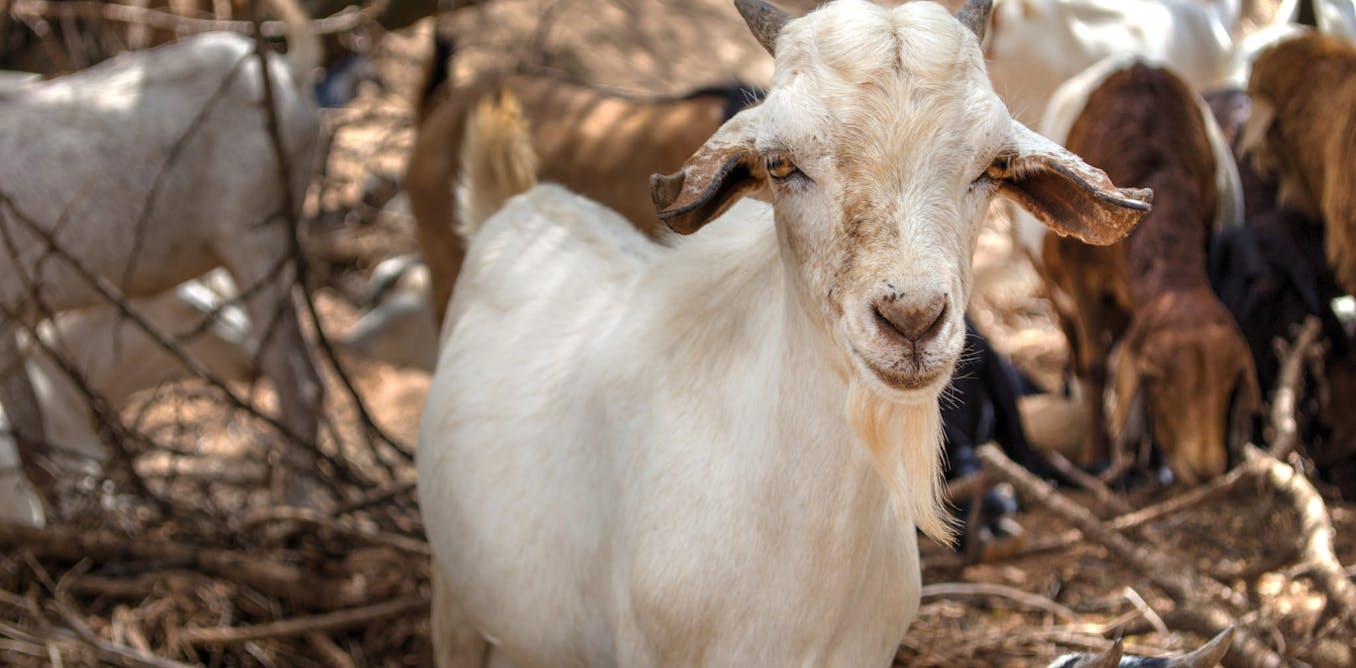[ad_1]
Small ruminant farming contained in the Democratic Republic of Congo (DRC) accounts for higher than 72% of family incomes however it’s beneath hazard from a illness generally generally known as ‘goat plague’, or peste des petits ruminants. The Dialog Africa’s Samantha Spooner requested Ahadi Birindwa relating to the plague and what’s being carried out to cease it.
What’s the ‘goat plague’ and the way in which wherein widespread is it?
Peste des petits ruminants (PPR) or ‘goat plague’ is an acute viral illness that impacts home (sheep, goats) and wild (springbok, gazelles and impala) small ruminants. These are animals that carry up meals from their abdomen and chew it as quickly as further.
It’s one among many damaging animal illnesses, affecting small ruminants in virtually 70 nations in Africa, the Center East and components of Asia. PPR has a excessive morbidity, or incident, (80-90%) worth and mortality (50-80%) worth. It’s extra extreme in youthful animals, these with poor weight-reduction plan and concurrent parasitic infections.
It causes $1.5 – 2 billion in losses yearly in areas which might be dwelling to over 80% of the world’s sheep and goats. The illness just isn’t zoonotic – in a number of phrases it doesn’t have an effect on individuals. Nonetheless
it impacts meals safety and the livelihoods of the poorest small-scale holder farmers. Consequently it’s among the many many many precedence illnesses indicated in a world framework devoted to the administration of trans-boundary animal illnesses.

How is the virus unfold? How contagious is it?
Transmission of PPR is achieved by every direct contact with contaminated animals, or by way of respiration or contact with saliva. There have furthermore been documented circumstances of transmission by way of the dealing with of contaminated animal merchandise.
Due to it’s so contagious, about a million goats and 600,000 sheep contained in the Democratic Republic of Congo (DRC) are liable to contracting the illness. This represents 1 / 4 of goats and two-thirds of sheep all by all the nation. Prevalence is significantly excessive in japanese DRC.
Critiques present that the DRC has been contaminated with goat plague since 2008. Between 2010 – 2012, it triggered the dearth of lifetime of almost 120,000 small ruminants. The annual direct loss – the worth of lifeless sheep and goats – is estimated at $5.3 million.
The place contained in the nation are animals most affected?
Animals are most affected inside {the japanese} a part of the nation, the South Kivu house. At 65% of the goat and sheep inhabitants, prevalence is excessive. Considerably in Shabunda (56.5%), Mwenga (54%), Fizi (40.8%) and Kalehe (20.3%) territories. Some circumstances have furthermore been reported contained in the West.
On account of the illness is a trans-boundary illness, there’s a priority that it’ll unfold to neighbouring counties together with nations resembling Rwanda and Burundi which have definitely not had opinions of it ahead of.
There’s attributable to this fact a necessity for correct diagnostic, administration and surveillance at a nationwide and worldwide diploma.
How obligatory is small livestock farming contained in the Democratic Republic of Congo?
Goats and sheep are the animals of alternative for spherical 80% of farmers. Goats are generally generally known as the “poor-man’s cow” contained in the DRC, contributing higher than 72% to the family earnings. Goats and sheep are the animal of alternative for spherical 80% of farmers.
Goats are widespread on account of they value quite a bit a lot much less so households use them to assemble herds, they’re present of milk, fibre, pores and pores and pores and skin and meat they usually present pure manure. In addition to they’ve cultural and social significance as they, together with cattle, are used at wedding ceremony ceremony ceremonies.
Nonetheless, irrespective of their significance, DRC’s small ruminant inhabitants has gone down from 5.7m in 1998 to 4.4m in 2014. The illness is a essential contributor to this.
What steps are being taken to eradicate the illness?
The analysis downside I’m engaged on appears to be like on the administration, surveillance and eradication of goat plague contained in the DRC.
Thus far I’m wanting on the standing of the illness. I’ve collected samples (blood, tissues, swabs and serum) from each contaminated and uninfected goats and sheep in areas which have professional outbreaks.
Consequently I’ve been able to diagnose and characterise the virus strains which might be circulating contained in the DRC. I’ve furthermore been prepared to rearrange sero-epidemiology – that’s the prevalence of non-vaccinated animals which have antibodies in opposition to the illness. This has enabled me to create a map of utmost danger areas and resolve necessary danger components associated to the illness.
All of those will assist with the design of a administration, vaccination and surveillance technique. The next step will almost certainly be to determine an info centre, vaccines, a surveillance program and publish vaccination analysis. Fully completely different analysis that’s wanted is that on vaccines – to assist resolve genes which might be proof towards the illness with a view to create a domestically tailored breed.
[ad_2]